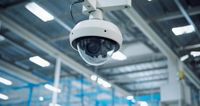In an era where surveillance technology is becoming increasingly sophisticated, the question of privacy has never been more pressing. Security cameras, once limited to grainy images and passive recording, have evolved into advanced systems that are sharper, smarter, and more connected. These devices are now capable of recording vast amounts of data every second, raising critical concerns about data protection laws and individual privacy.
Today’s security cameras do much more than just capture video footage. They detect movement, classify objects, identify faces, and even send live alerts to monitoring centers or mobile phones. Some models come equipped with built-in microphones, thermal sensors, and license plate recognition capabilities. This rapid advancement in surveillance technology has blurred the lines between public and private spaces, leaving legal frameworks struggling to keep pace.
As technology races ahead, governments around the world face the challenge of regulating these innovations. The regulations vary widely from one country to another, creating a patchwork of laws that complicate enforcement. For instance, in San Francisco, city departments have banned the use of facial recognition technology altogether. Conversely, in parts of China, it is employed to monitor everything from shopping habits to school attendance and even to impose fines for jaywalking.
Between these two extremes lies a complex web of outdated statutes and grey areas that make consistent enforcement nearly impossible. Even in countries with robust data protection laws, like those governed by the EU’s General Data Protection Regulation (GDPR), the use of security cameras often slips under the radar. GDPR does impose restrictions on surveillance in public spaces, but the enforcement of these regulations remains tricky, and many organizations are unaware of the full legal implications.
Ownership of surveillance footage presents another area of confusion. For public-facing cameras owned by local governments or police, it’s typically clear that the footage belongs to the governing body. However, the situation is murkier for private businesses with cameras pointing toward the street or homeowners using smart doorbells that capture pedestrians walking past. As surveillance systems become more affordable and widely adopted, individuals are increasingly recording footage of people who have not given consent, complicating the legal landscape.
Consent is a cornerstone of privacy law, but how does it apply in a world where individuals might be recorded hundreds of times a day without their knowledge? Walking through a shopping center, for example, a person may encounter cameras positioned at entrances, hallways, and individual shops, some of which notify passersby with signs, while others do not. The inconsistency makes it difficult to ascertain when and how consent is given, particularly when some footage is deleted instantly while others are stored for extended periods.
Artificial intelligence is further evolving the capabilities of surveillance systems. Smart technology can learn typical behavior patterns and flag anomalies, such as someone lingering near an exit or leaving a bag unattended. While these features can enhance security, they also raise concerns about constant behavioral analysis and profiling. Critics warn that this could lead to a chilling effect, where individuals begin to self-censor or avoid public places due to the feeling of being constantly watched.
Moreover, the use of AI in security systems has been criticized for potential bias. Numerous studies indicate that facial recognition algorithms often have significantly higher error rates when identifying people of color, women, or the elderly. Without proper regulation, these systems could inadvertently lead to discriminatory outcomes.
Looking ahead, it seems likely that surveillance will become even more embedded in daily life. Cameras continue to shrink in size, decrease in cost, and increase in power, while being installed in more locations and operated by a wider array of entities. Yet, clarity around acceptable practices remains elusive. To strike a balance between public safety and individual privacy, regulators must move swiftly to redefine consent, update outdated laws, and introduce standards that reflect the capabilities of modern surveillance technologies.
As the technology becomes ever more present in our lives, the question arises: is a global wake-up call needed? The undeniable benefits of enhanced surveillance in preventing crime and managing public spaces must be weighed against the risks posed to personal freedom and privacy. The challenge is not merely how we use security cameras but whether we have adequately considered the consequences of their use without clear boundaries.
Until legal frameworks catch up, individuals, businesses, and governments alike are navigating a connected world without a reliable map. The technology is already here, but the pressing question remains: can the rules designed to protect our rights keep pace with the rapid evolution of surveillance capabilities?
In a related development, college students have voiced their concerns about privacy risks associated with the increasing prevalence of smart glasses. As these devices become more integrated into daily life, the potential for surveillance extends beyond traditional cameras, further complicating the privacy landscape.
The discussion surrounding surveillance technology is timely and crucial, especially as markets respond to the ongoing changes in this field. Recently, stocks surged over 600 points after a tumultuous week, reflecting investor confidence amid these evolving technological and regulatory landscapes.
As the debate continues, it is clear that the intersection of surveillance technology, privacy rights, and regulation will remain a focal point of discussion in the coming years. The challenge lies in ensuring that while we embrace the benefits of advanced surveillance, we do not lose sight of the fundamental rights that protect individual privacy.





